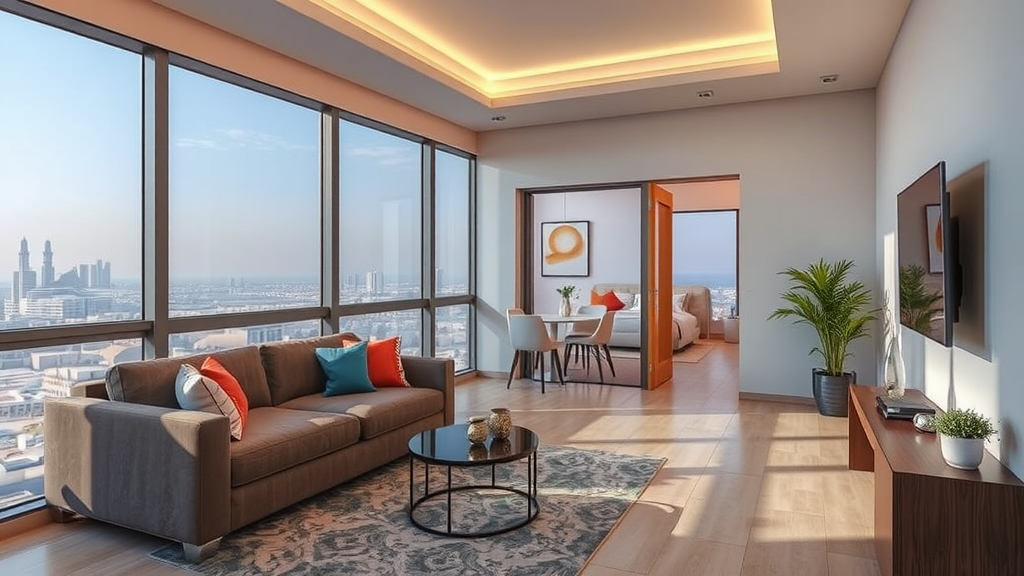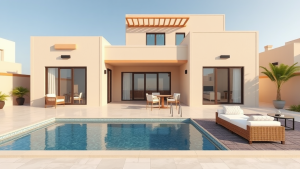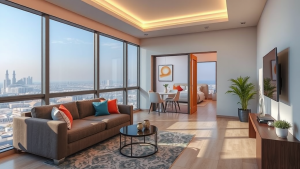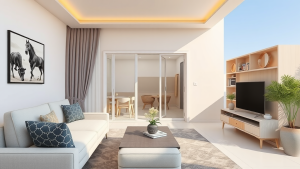Essential accessible home features for retirees
As you prepare to enjoy your retirement years, it’s crucial to consider how your home can accommodate your needs. Accessible home features can make a significant difference in safety, comfort, and overall quality of life. Here are several essential accessible home features that retirees should know about to create an inviting and functional living space.
Entryways and exits
Your home’s entryway should be welcoming and easy to navigate. Here are some key points to consider:
- Zero-Grade Entries: Homes with no steps at entrances are easier to navigate, especially for those with mobility aids.
- Wide Doorways: Ensure doorways are at least 36 inches wide to accommodate wheelchairs and walkers.
- Good Lighting: Bright lighting at entry points helps prevent accidents and makes it safer to enter and exit.
Kitchen adjustments
The kitchen can be a challenging area for retirees. Making a few simple changes can enhance its accessibility:
- Lower Countertops: Install countertops at different heights, allowing for easier access while sitting or standing.
- Pull-Out Shelving: Use pull-out shelves in cabinets to make reaching for items less strenuous.
- Easy-To-Reach Appliances: Choose appliances that are intuitive and accessible, such as front-loading ovens and side-by-side refrigerators.
Bathroom safety
The bathroom can pose the most significant risks. Implement these safety features to create a user-friendly space:
- Grab Bars: Install grab bars near the toilet and shower for extra support.
- Walk-In Showers: Consider a walk-in shower without a lip to prevent tripping.
- Non-Slip Floors: Use materials that provide traction when wet, reducing the risk of falls.
Living spaces
Accessible living areas can enhance daily comfort. Here are some tips:
- Open Floor Plans: Open spaces allow for easier movement and make it simpler to navigate with mobility aids.
- Furniture Arrangement: Arrange furniture to leave ample space for walking routes, minimizing obstacles.
- Remote-Controlled Devices: Consider using smart home devices that are controlled remotely, such as lights and thermostats. This can be especially useful for those with limited movement.
Bedroom considerations
Your bedroom should be a retreat that caters to your comfort. Here are ways to make it more accessible:
- Adjustable Beds: An adjustable bed allows you to change positions for better comfort while reading, watching TV, or sleeping.
- Clear Pathways: Keep pathways around the bed clear of clutter for easy movement.
- Bed Height: Ensure that the bed is at a height that is easy to get in and out of.
Outdoor spaces
Access to the outdoors is essential for enjoying nature and staying active. Consider these outdoor features:
- Ramps: Build ramps instead of steps to make porches and gardens easily accessible.
- Wide Pathways: Ensure walkways are wide and stable for easier navigation.
- Seating Areas: Create comfortable seating spots in the garden or yard for outdoor relaxation.
Accessible home features can significantly enhance the quality of life for retirees. By thinking ahead and making these adjustments, you can create a safe and comfortable environment that supports your lifestyle. Now is the time to take action and consider how these features can be integrated into your home.
The benefits of adapting your home for aging in place
As you transition into retirement, the comfort and safety of your living environment become increasingly important. Adapting your home to meet your changing needs is a proactive step that can boost your independence and enhance your overall quality of life. Understanding the benefits of making your home more accessible can help you make informed decisions.
Enhancing safety in your home
One of the biggest advantages of adapting your home for aging in place is the increased safety it provides. Here are some features to consider:
- **Non-slip flooring**: Install materials that reduce the risk of slipping, especially in areas like the kitchen and bathroom.
- **Grab bars**: Adding grab bars in bathrooms and near stairways can provide essential support and prevent falls.
- **Elevated toilets**: These can ease the strain on your joints, making it easier to sit down and stand up.
Improving accessibility
Accessibility is vital in maintaining your independence as you age. Consider the following modifications:
- **Wider doorways and hallways**: These modifications allow for easier navigation with mobility aids such as walkers or wheelchairs.
- **Ramps**: If you have stairs, adding ramps can make moving in and out of your home more manageable.
- **Height-adjustable features**: Install countertops and work surfaces that can be adjusted to different heights, allowing you to use them comfortably regardless of mobility changes.
Boosting comfort and convenience
Adapting your home can significantly enhance your daily comfort and convenience. Here are some ideas to consider:
- **Smart home technology**: Incorporate smart devices like voice-activated assistants, automated lighting, and thermostat controls to make daily tasks simpler.
- **Lever-style door handles**: These are easier to use than traditional doorknobs, particularly for those with arthritis or other hand mobility issues.
- **Open floor plans**: If feasible, consider creating a more open layout that allows for easier movement and access to various areas of the house.
Encouraging social connections
Creating an accessible home also helps to foster social interactions, which is essential for emotional wellbeing. By making your space more inviting, friends and family will feel welcome to visit. Consider the following:
- **Comfortable seating options**: Ensure you have enough seating that accommodates guests, while also being easy for you to get in and out of.
- **Outdoor spaces**: If you enjoy gardening or want to be outside, consider accessible outdoor areas where you can socialize comfortably.
- **Designated gathering spots**: Create spaces like an open kitchen-dining area that encourages family and friends to gather together.
Financial benefits
While some adaptations may require upfront costs, the long-term financial benefits can be substantial. Making your home accessible can reduce healthcare expenses associated with injuries due to falls or accidents. You might also avoid the high costs of assisted living facilities by staying in your own home longer. Some financial aspects to consider include:
- **Tax deductions**: Certain home modifications may qualify for tax credits or deductions.
- **Increased home value**: Accessible features can make your home more appealing should you decide to sell in the future.
Choosing the right modifications
When considering changes to your home, it’s essential to evaluate which modifications will best suit your needs. Consulting with experts can help you identify what adjustments will make the biggest difference. Additionally, consider involving family members in the planning process to ensure every aspect is covered.
By adapting your home for aging in place, not only can you enhance your safety and comfort, but you can also preserve your independence and enjoy a better quality of life. Take the time to explore your options and invest in your future well-being.
Creating an accessible home is a vital step for retirees who want to live comfortably and independently as they age. By incorporating essential accessible home features, you can greatly enhance your daily life. Simple modifications, such as installing grab bars, choosing non-slip flooring, and ensuring smooth transitions between rooms, can prevent accidents and promote safety. Wider doorways and lower countertops are just a couple of structural changes that facilitate better mobility, making it easier to navigate your space.
Adapting your home for aging in place offers numerous benefits. It not only keeps you safe but also allows you to maintain your independence. When your home is tailored to your needs, you can focus on enjoying life rather than overcoming daily challenges. You’ll find that tasks like cooking, bathing, and moving around become more manageable, increasing your overall well-being. The sense of comfort and security that comes from feeling at home can significantly impact your mental and emotional health.
Ultimately, planning for these modifications ahead of time can save you from costly renovations down the road. It empowers you to take charge of your living situation while also providing peace of mind for both you and your loved ones. Embracing accessible home features will ensure that your home remains a sanctuary, enabling you to enjoy your retirement years to the fullest. Whether you’re making small changes or planning a larger renovation, prioritize accessibility to create a nurturing environment that supports your lifestyle as you age.
17% discount – modern 2 bedroom villas near shops in al kawther Hurghada under 125k — homes for swedish surfers
15% off – stylish studio apartments in safaga Hurghada under 50k — homes for british retirees












